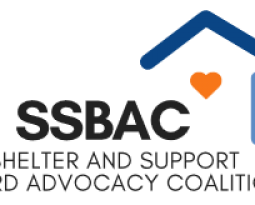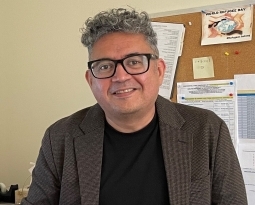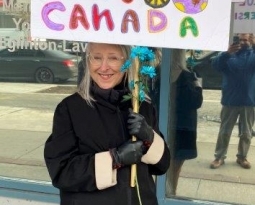Do you remember something which happened in your life that you can never forget? It could be your first pair of shoes, or your first time to drive a car or it even could have been bad like a fatal car accident from which you survived or a spank on your behind by your grandma. It is still and will always be vivid. You lie down on your bed and see it. It is like it happened yesterday.
On my list of such incidents are two in Canada: the operation theatre in Sunnybrook Hospital and my first day at the old medieval stone walled structure I came to know as Sojourn House.
Perched in the metropolitan Toronto along the short narrow Bond Street – off Queen is the Sojourn House. The low-lying double-storey century-plus building lies between two churches of typical Victorian architecture. An ordinary person driving around would mistake it for a convent or a church diocesan headquarters.
If a Torontonian who died in 1900 resurrected in the Parking yard of Sojourn House, he would not think he has been in the grave for long. He probably would think that he has been dead for a year or two. Nothing so much changed. He would only be mesmerized by the towering structures to the West and the sleek cars that park there for a fee. He would then walk to the entry of Sojourn House and see some old and middle-aged men smoking at the front porch. Some would be dressed in tattered but warm coats with unshaven beards and unkempt hair. He would wonder who they are. They would then tell him that they are homeless Canadians enjoying the philanthropic handouts from Providence.
Yes. Providence. But who is this providence and from where and why? If I happened to be around that day – I mean the day I came to Sojourn House, I would be asking myself the same question.
Walking with a deep limp, my right hand tightly gripped to a cane, I was tired after a hop-hike close to a kilometer from where I had been dropped by a friend. I had come to this place after being told that it served as a sojourn. However, I was cautioned that once there, I should identify myself as a refugee to avoid being confused with other homeless Canadians who take shelter and sometimes partake of special buffets specially prepared for them there. You will always stumble into one or two at the main entrance as they descend to or come out from the basement – where they sometimes sleep over.
I walked up a flight of stairs and noticed from their look that they were several years old and if they had been replaced, it would have been around about World War Two era. Another two flights brought me to the hostel entry. I had expected to find ragged, probably mean personnel tired of looking at supposedly homeless people who I imagined thronged their offices every day and night in search of food and shelter. Urban communities abhor and shun such people in my country because they are assumed to be more productive if they could settle in their country homes and till land for crops to live on. In cities, they are considered a menace and often charged with being idle and disorderly by law-enforcement officers. Refugees have to go to UNHCR for help. So, here I was.
No sooner had I stepped in the front office than a young, well-dressed lady smiled at me and asked if I was a new guest. She then showed me where to go for assistance. Because of the fatigue that was noticeably evident on me, she asked me if I had had anything to eat. I answered to the affirmative. However, I explained that I had walked a long distance on a bad leg and I was beginning to feel some aches and pains. My feet were hot. My weight was flopping about my ankles.
Immediately, I was seated on a chair and a warm dialogue ensued. My low spirits were immediately elated. Only five minutes of conversation had placed me in “home sweet home”. In another twenty minutes, I was on my way to the Immigration offices in Etobicoke after tossing down a cup of warm tea. I had been given tokens for my transport to and fro. The rest followed like rolling a wheel down a smooth slope.
In the days that followed, I was a member of a typical family where members share meals, sleep together, and participate in usual household chores together. We started making friends and sharing experiences. Soon, we were patting each other’s shoulders and walking in and out of the offices whose doors are always open. And I mean it: doors are open twenty-four hours a day. It is not the proverbial open doors. This is real.
Soon I was to notice that all public and private offices that deal with refugee claim issues are so conveniently located in walking distance. It is amazing!
Two weeks after I went to Sojourn Home (I prefer calling it home to house), my leg developed a problem. I had undergone a total hip replacement a year before and there was some unusual pain in the hip. With the typical Sojourn spirit, I was helped to reach my doctor in Sunnybrook and Women’s Hospital and assured that I was going to be given all the assistance I required. In the seven weeks that I was in hospital, Laulleen or Fatima or Jesus (not the Jesus from the Bible – but a living ordinary man whose name is Jesus and helps and counsels Sojourn clients), gave me a phone call from time to time. Shaun brought me the weekly allowance of $26.25, which helped me greatly when I was in hospital. Without this money – little as it looks, I would have collapsed in hospital. At one time, just around Christmas, I failed to eat hospital food and I pulled out from the “Shaun treasure” to purchase a tasty sandwich from the hospital canteen. I will never forget this. I had a better Christmas feast than millions of other patients riveted to their hospital beds.
At the end of January I left hospital and plunged myself into the Sojourn warmth again.
There are three attributes I will feel unfair to go without accrediting Sojourn House for: hospitable reception, professional counseling and expeditious execution of refugee resettlement. When you imagine that the staff are dealing with people from different countries and varying backgrounds, you would be able to understand how difficult a task it is to handle refugees at Sojourn House. Remember, some do not even know English. So, someone has to be called to help in translation. Some come from parts of the world where culture and integrity have been eroded by wars and political turmoil. So, they are a bit delicate to deal with. Some are confused, depressed or schizophrenic and require professional handling. It is a quagmire of mixed personalities.
All this notwithstanding, there are bottlenecks and challenges the administration faces to grapple with: blocked water pipes caused by untrained new entrants, broken or too-old-to-stand chairs in the dining and living room, less than required utensils and aging toilets, which are overstretched. Sometimes the WCs rebel and refuse to function the way they are designed to. They cannot flush. Almost all utilities have to undergo regular repair: the heating system, plumbing, laundry, electricity – mention it. However, on no single day has Sojourn failed to help the ever full capacity occupancy at the hostel.
In my language there is a saying that he who gives a glass of water to you as a thirsty stranger is better than the rich who gives you a full gourd of the milk from one cow out of his herd as a gift.
During my visits to the US, Europe, Middle East and several countries in Africa as a journalist, A day on Toronto Streets showed me that there is a place in the world called Canada, where hope and motherly warmth is restored to the despondent homeless from afar. This day has left an unforgettable mark. I will live the rest of my life to remember it. Thanks and special kudos to Sojourn.







